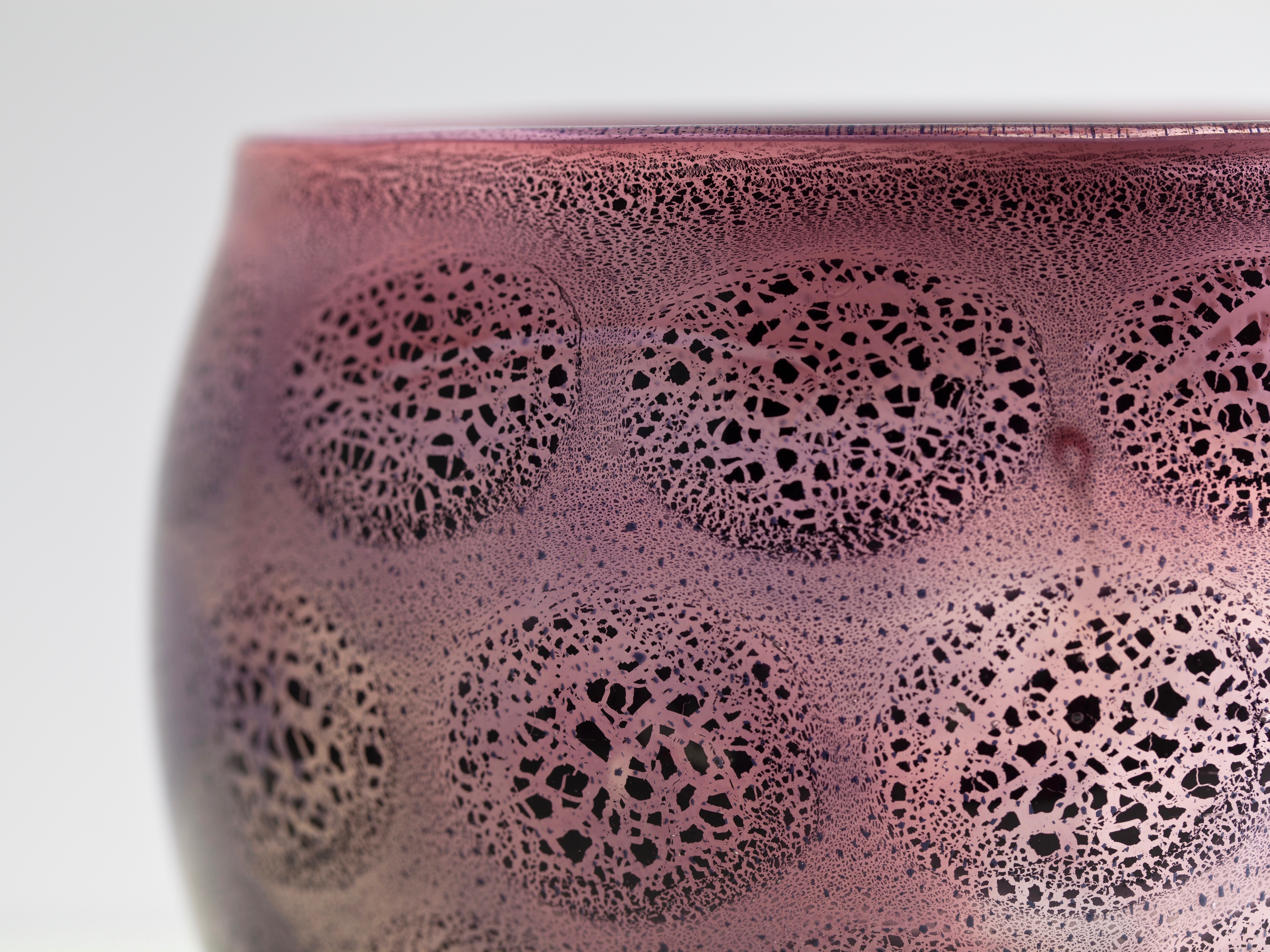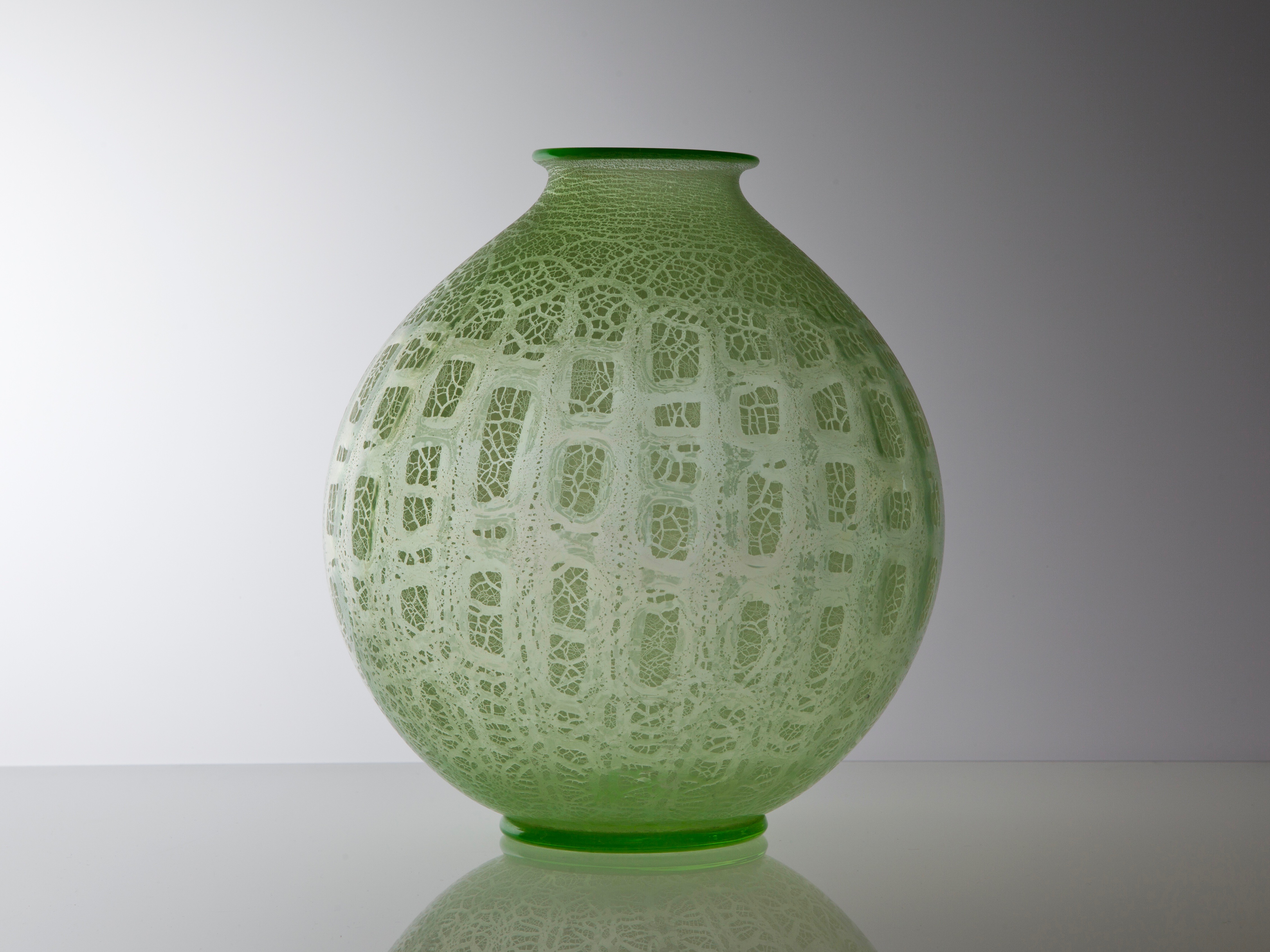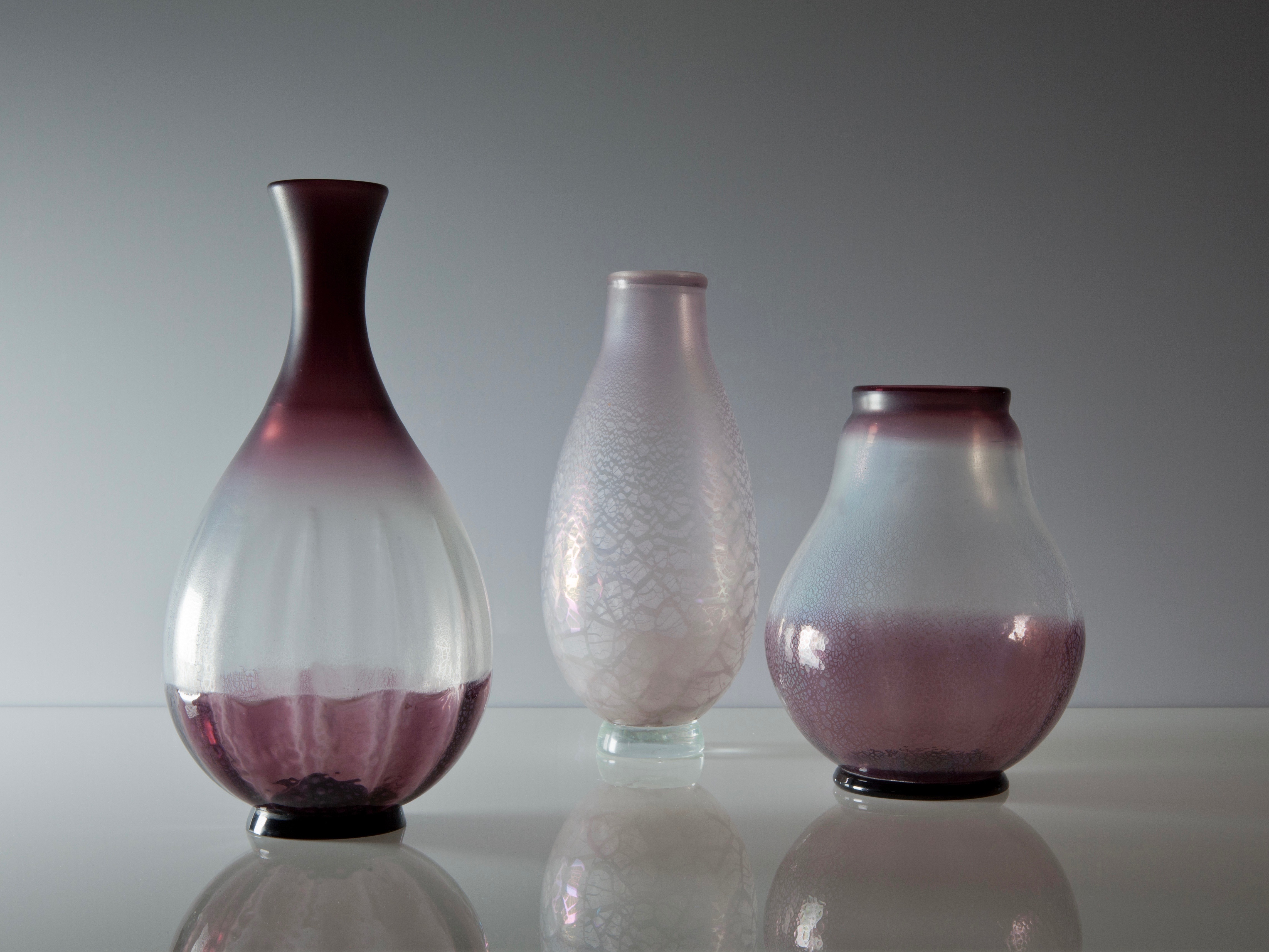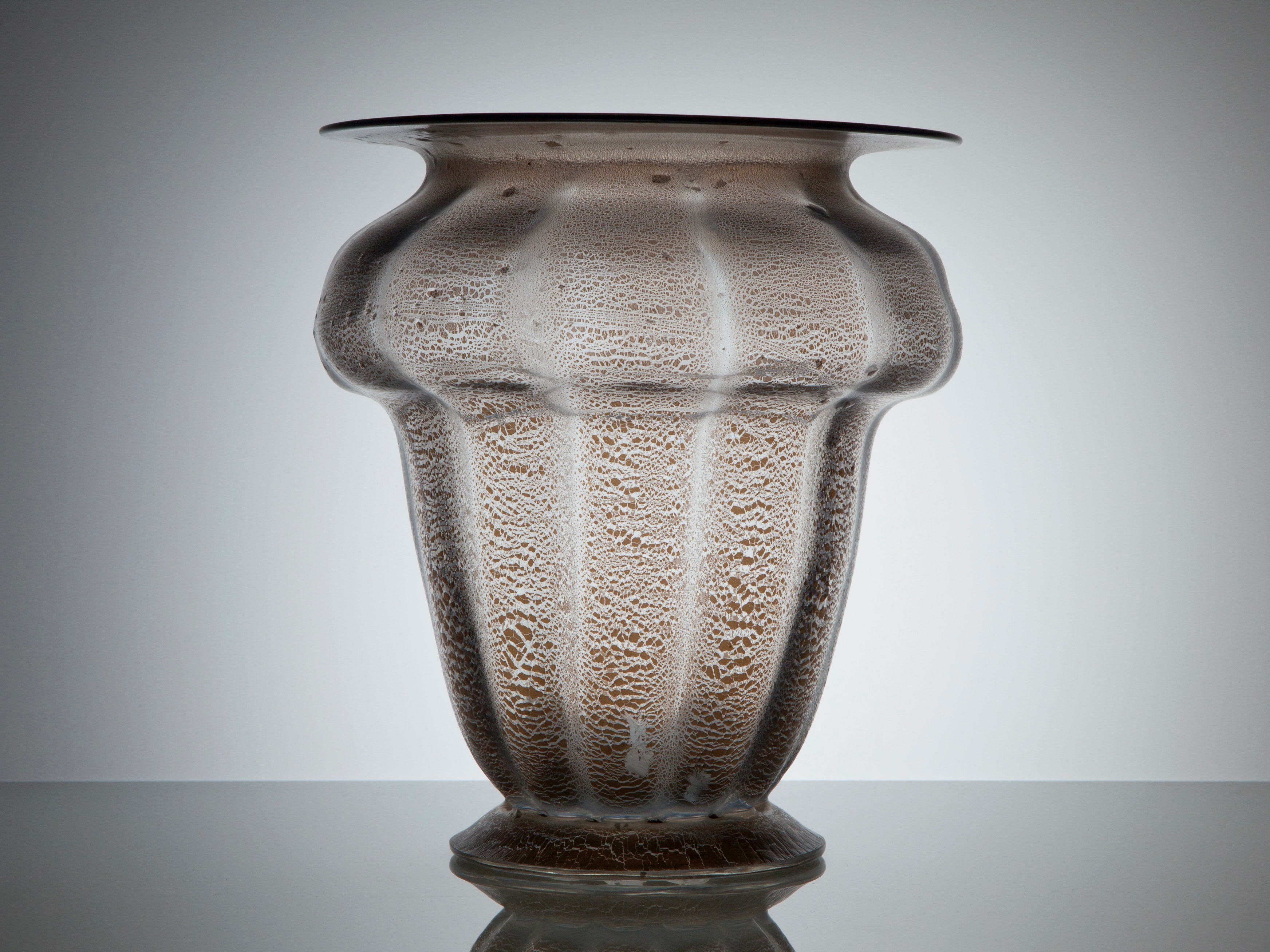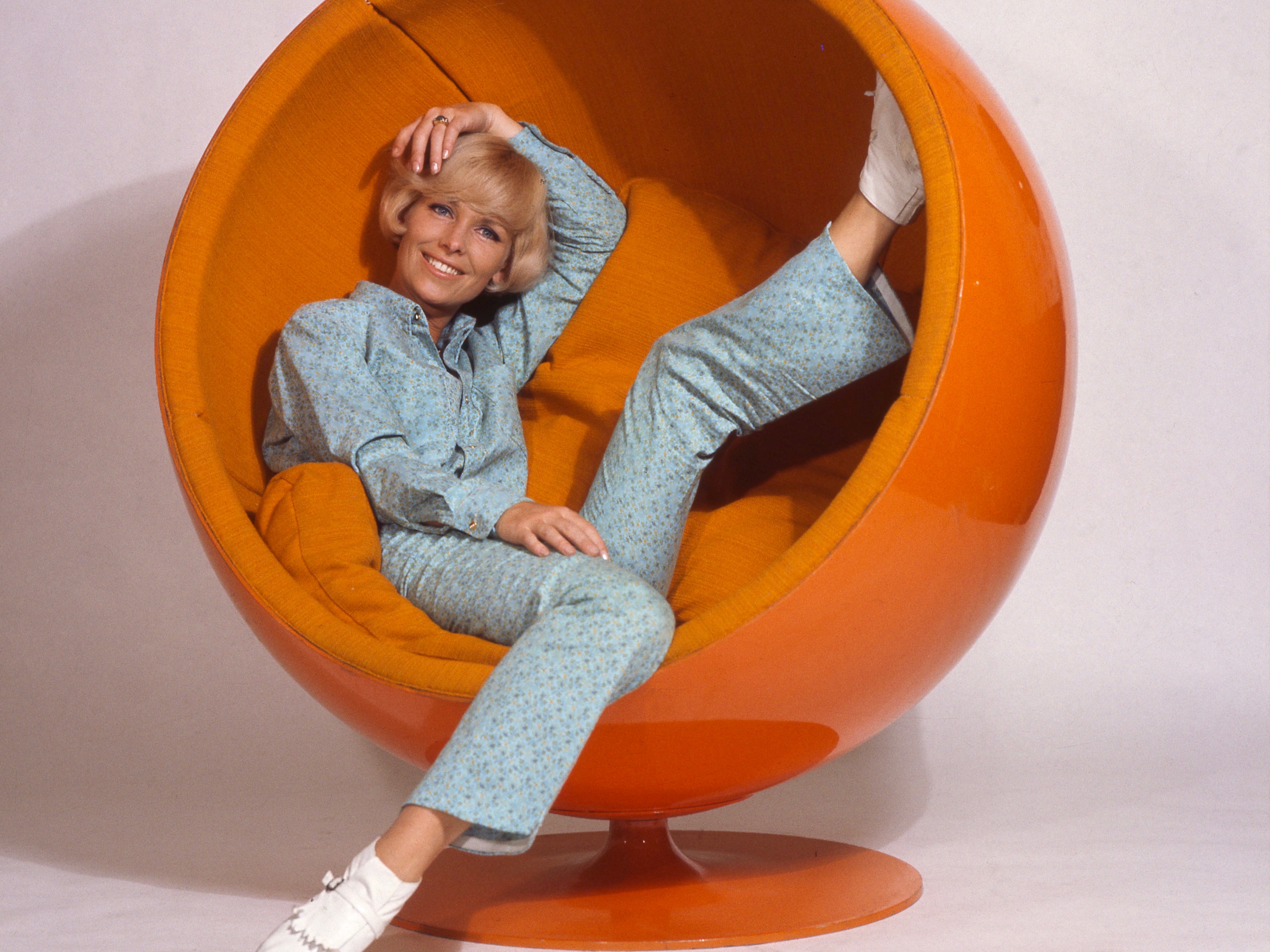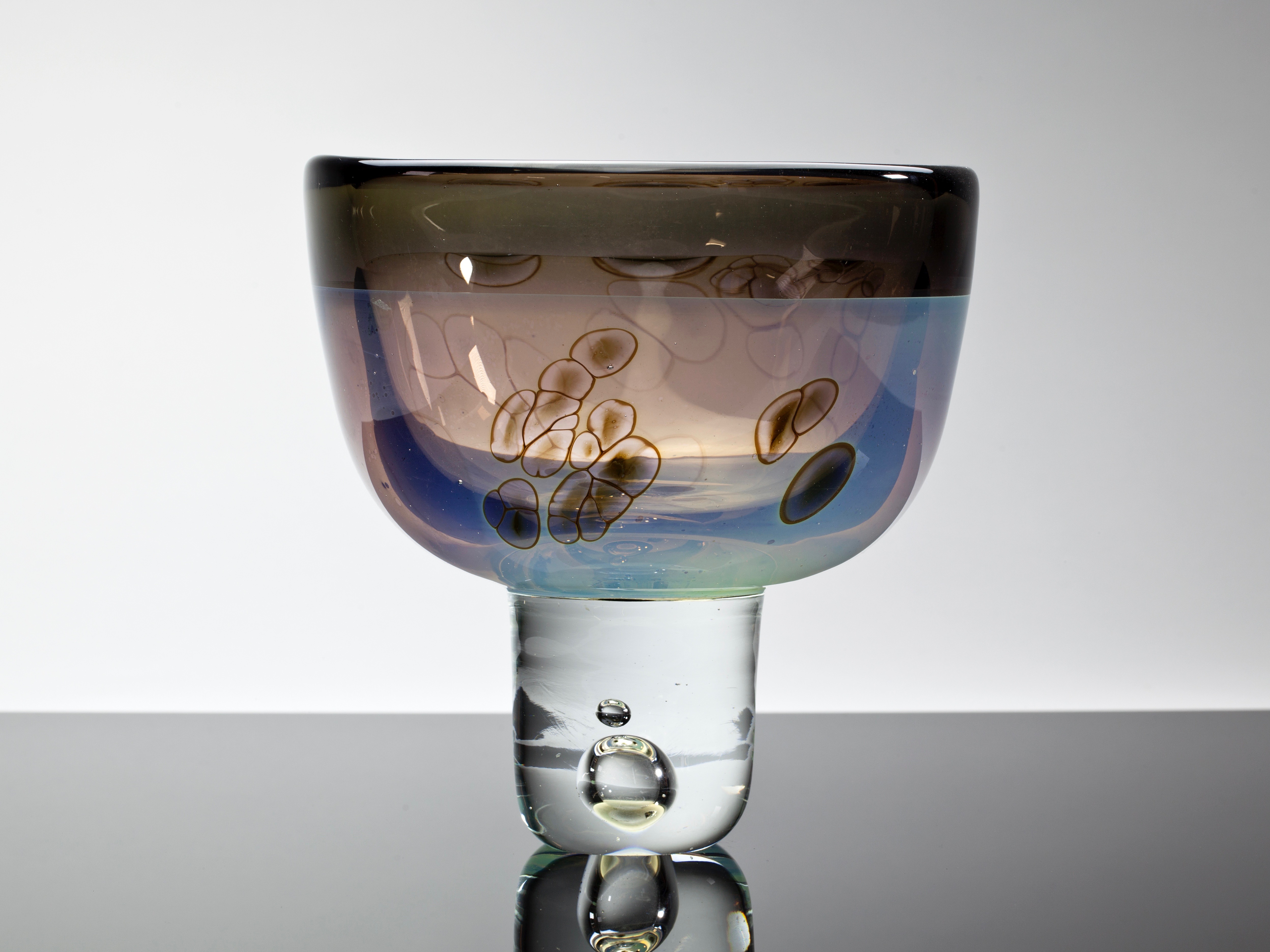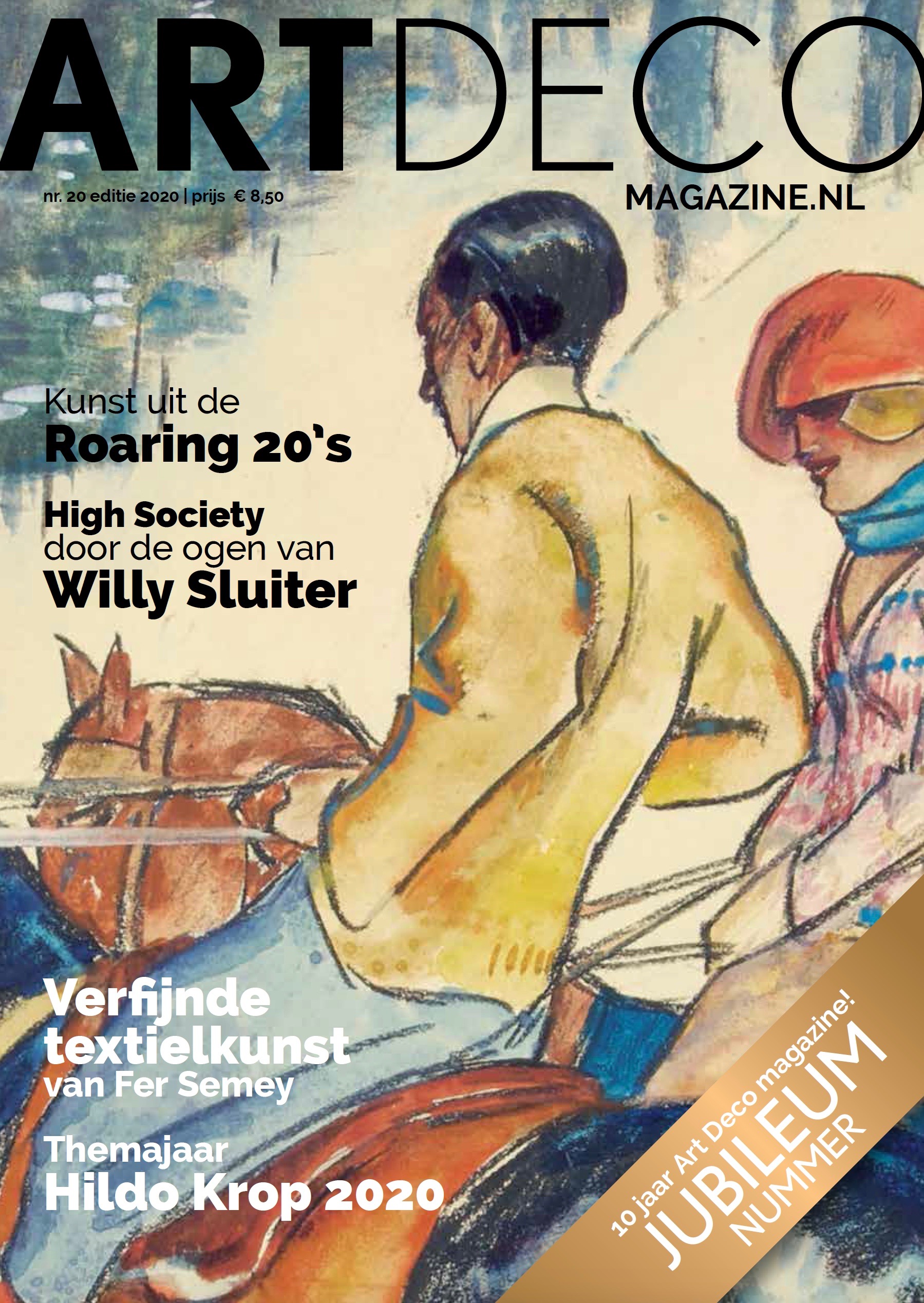Andries Copier: Seventy Years of Glass Innovations
Already at a young age, the design talent of Andries Dirk Copier was recognized. When he had just turned 24, in 1925, he received a silver medal for his beautifully styled glassware Smeerwortel (English: Comfrey Root). In this period, he also designed his first unique glass objects. With his innovative ideas pertaining to glass art, Copier, whose career stretched out over seventy years, proved time and time again to be way beyond his time.
Beauty in the modest households
After leaving school in 1914, Andries Dirk Copier (1901–1991) began to work at the Leerdam Glassworks (Glasfabriek Leerdam), specifically in the etching division, which was headed by his father. In around 1915, P. M. Cochius (1874–1938), the enlightened and socially committed general director of the Leerdam Glassworks, put an end to the production of glassware in the historicizing style. His aim was centred on producing affordable glass objects designed by artists in an effort to convey some idea of beauty into modest households that, up until that point, “had been full of hideous products”.
Most important glass designer of the 20th century
Andries Copier made his way through many departments in order to familiarise himself with all techniques. From 1920 onward, he supervised the output that was mass-produced after designs by freelance designers, including the architects K. P. C. de Bazel and H. P. Berlage. He was responsible for the design department from 1923. In 1922, Copier began to design drinking glasses, thus embarking on a career without precedent as one of the most important glass designers of the 20th century.
Leerdam Unica
For his Smeerwortel set, Copier was awarded a silver medal at the 1925 ‘Exposition internationale des Arts dcoratifs et industriels modernes' in Paris. In 1923, he began designing Leerdam Unica— one-offs that aided in practising techniques and exploring material properties. Essentially, they were experimental in character, but also schooled the skills of glassmakers, qualifying them, since they had to enter uncharted territory in some respects. Copier himself had to gain experience in dealing with the physical and chemical properties of glass as a material and in working with such a resource. From the experience he gained from these experiments, Copier also hoped to be able to exert a positive influence on the formand manufacturing integrity in collection products and mass-produced articles. In the long run, this marked the beginning of a distinction between art glass and household glassware, albeit not in the sense that they represented opposites, as art already had begun to influence the industry. Unica provided a possibility for making Leerdam better known and accordingly establishing — and gradually consolidating — the Glass Factory’s reputation for art glass. As a result, demand was created to a certain extent; hence, in 1928 the decision was taken to apply all experience made with experimental Unica to series of typical forms. These small collections were called Serica.
For more than forty years, through his Unica pieces, Copier demonstrated how far ahead of his time his ideas on art were. Together with his team, he discovered an endless range of new techniques that could be used both on Unica as on utility glass. They developed new colours, and cut, rubbed, pricked and formed the material with tools or using moulds so ribs and bubbles could appear in the glass. An important step was the experimentation with chemicals, which induced all types of different effect. In order to do this, Copier worked closely with one of his brothers, who worked as a chemist at the factory. He evaporated metal oxides and other substances onto the warm glass, forming a layer on the glass with an oil-like sheen — the so-called irisé. A matt white layer was created with tin chloride; once the warm glass bell was further blown out, it broke apart into a fine pattern. Especially in combination with the mould in which the vase was blown out, this induced a beautiful effect because the layer of decoration formed into a regular pattern. This so-called craquelé glass would be one of Copier’s greatest successes.
Perfect Works from the Forties
The next experiences with material and techniques led to increasingly complicated pieces of work, in which beautiful effects were achieved by combining all different types of procedure. Unica came to provide examples of previously unknown craftsmanship, with several layers of glass on top of one another in which various kinds of decorative techniques were implemented. In this way, pieces were created with combinations of craquelé, colourful powders and pressed figures under different layers of glass, essentially conjuring up an entire fairyland.
Especially in the 1940s, Copier reached great heights in his use of the technique of relief decors, caught between thick layers of glass creating a lens effect. It is difficult to imagine that a glassblower could work with such an enormous hunk of hot glass, the weight of which could range up to twenty kilos. In the World Exhibition in 1937, located in Paris, the Leerdam Glassworks received a Grand Prix for the work of Copier. It was one of the many prizes that would be bestowed upon him throughout the course of his long career.
Daring Experiments
In the post-war era, the production of Copier declined simply because he had to dedicate himself to the more general artistic direction of the Leerdam Glassworks and important executive tasks. Nonetheless, Copier made use of every opportunity to be present at the workspace; he used such rare moments to experiment more freely, as in the case of ‘painting’ in enamel powders, which led to very abstract effects. Copier dared to bring glass further and further away from its functional use to devise and introduce new ideas. In 1953, he stretched a bowl so far that it became an abstract object rather than a practical tool. Through such experiments, Copier was years ahead of the ‘Studio Glass’ movement that arose in the sixties.
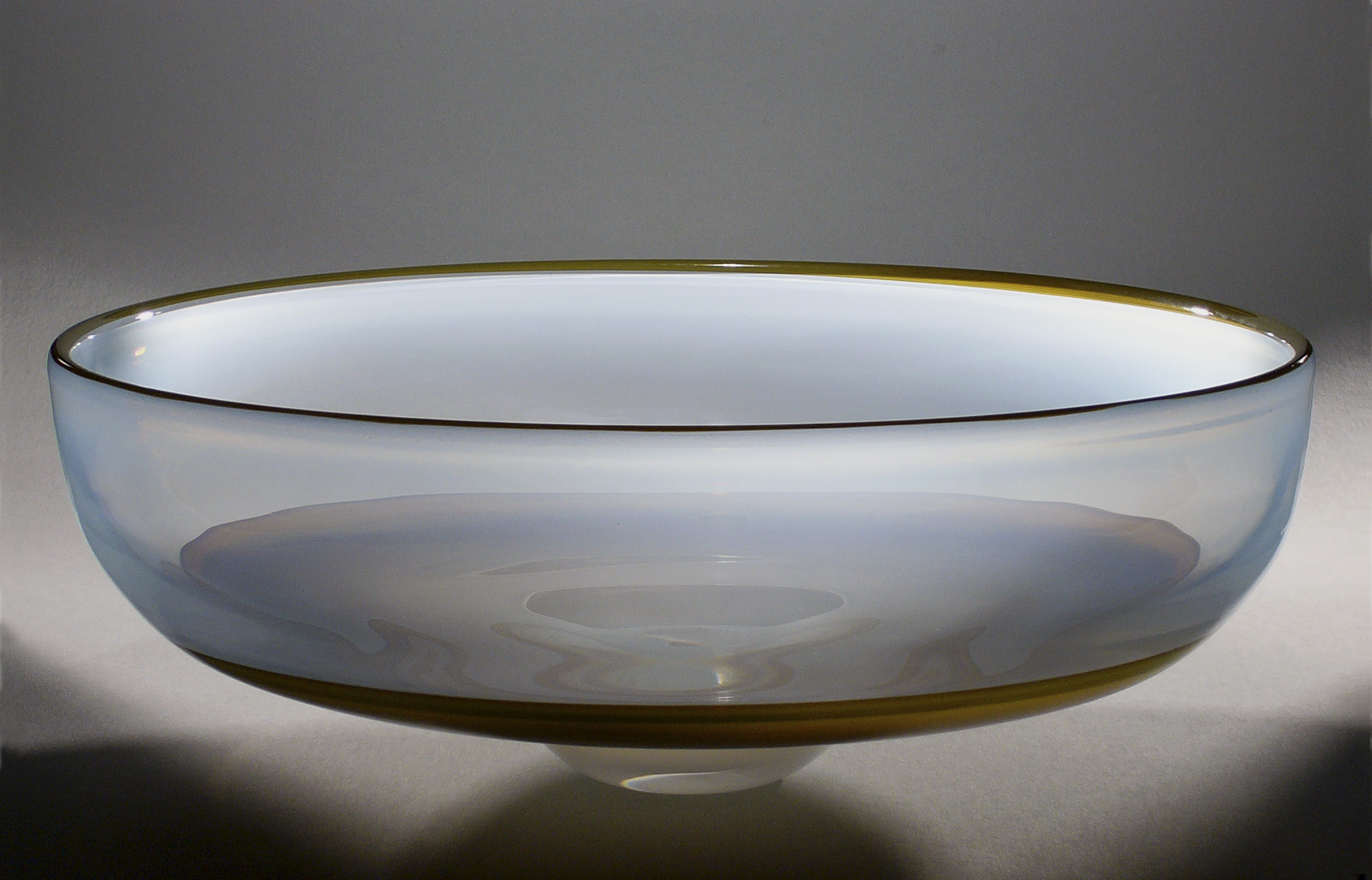
After he retired from the Leerdam Glassworksin 1971, he devoted all his energy and efforts to his family because his life’s work seemed to have come to a conclusion. In 1977, Copier again began to make Unica pieces according to his own ideas. It was very convenient for him that Willem Heesen (1925–2007), a former graduate of the Leerdam Glass School that Copier had founded in the 1940s, had set up a Studio Glass kiln at his De Oude Horn studio in Acquoy near Leerdam.
A new era of unknown creativity and productivity began: freed from the factory, the designer emerged as an autonomous artist. Studio Glass had taken a high flight with fresh talents that were creating a furore around the world. Thanks to the possibilities of small, flexible ovens, they were able to make their designs immediately — and with their own hands. The young artists enjoyed inviting Copier to their studios, and Copier in turneagerly embraced this opportunity to work together with young talents. What started off as a hobby quickly turned into a new oeuvre, one that ended with Copier traveling to all the world’s most important centres of glasswork, where he worked together with the best glassblowers in the world, such as Harvey Littleton and Gary Beecham in the United States, Lino Tagliapietra in Italy, Peter Novotny in the Czech Republic and Ann Wolff in Sweden. A number of these masters also came to the Netherlands to work with Copier and father Willem and son Bernard Heesen in their studio De Oude Horn. The inspiring joint ventures with young talent brought the elderly Copier to impressive artistic achievements. The talent of continuously reinventing himself is probably the secret to Copier’s seventy-year success.
Copier continued working and exhibiting until his death at the age of ninety. The works he produced in the last years of his life still reveal no trace of tiredness or flagging creative powers. There was no sign of what is, apparent in so many artists, called “work of old age”.
Many one-offs of Copier are exhibited at Kunstconsult's sales exhibition Gestolde Dromen IX. Click here for a selection of Copier objects from our collection.
© Kunstconsult – 20th century art | objects
Reproduction and distribution of this text is only allowed with correct reference.
